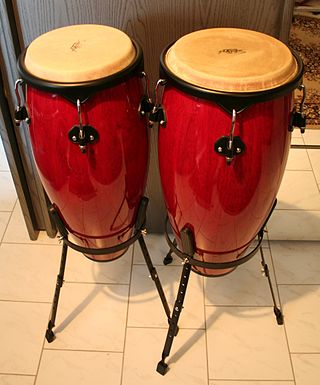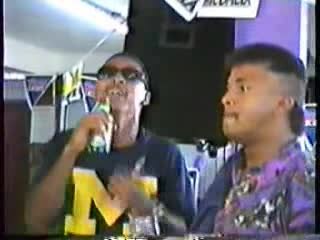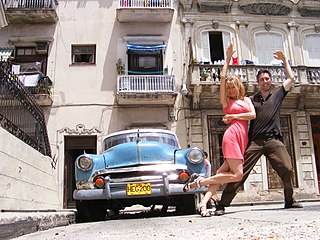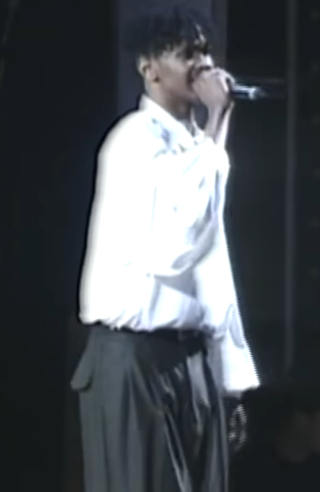Related Research Articles
The music of Latin America refers to music originating from Latin America, namely the Romance-speaking regions of the Americas south of the United States. Latin American music also incorporate the Indigenous peoples of the Americas. Due to its highly syncretic nature, Latin American music encompasses a wide variety of styles, including influential genres such as cumbia, bachata, bossa nova, merengue, rumba, salsa, samba, son, and tango. During the 20th century, many styles were influenced by the music of the United States giving rise to genres such as Latin pop, rock, jazz, hip hop, and reggaeton.

Salsa music is a style of Latin American music, combining elements of Cuban, Puerto Rican, and American influences. Because most of the basic musical components predate the labeling of salsa, there have been many controversies regarding its origin. Most songs considered as salsa are primarily based on son montuno and son cubano, with elements of guaracha, cha-cha-chá, danzón, descarga, bolero, guajira, rumba, mambo, jazz, funk, R&B, rock, bomba, and plena. All of these elements are adapted to fit the basic Son montuno template when performed within the context of salsa.

The Music of Puerto Rico has evolved as a heterogeneous and dynamic product of diverse cultural resources. The most conspicuous musical sources of Puerto Rico have primarily included African, Taino Indigenous, and European influences. Puerto Rican music culture today comprises a wide and rich variety of genres, ranging from essentially native genres such as bomba, jíbaro, seis, danza, and plena to more recent hybrid genres such as salsa, Latin trap and reggaeton. Broadly conceived, the realm of "Puerto Rican music" should naturally comprise the music culture of the millions of people of Puerto Rican descent who have lived in the United States, especially in New York City. Their music, from salsa to the boleros of Rafael Hernández, cannot be separated from the music culture of Puerto Rico itself.

Latin dance is a general label, and a term in partner dance competition jargon. It refers to types of ballroom dance and folk dance that mainly originated in Latin America, though a few styles originated elsewhere.

Reggaeton, also known as reggaetón or reguetón, is a modern style of popular and electronic music that originated in Panamá during the late 1980s, and which rose to prominence in the late 1990s and early 2000s through a plethora of Puerto Rican musicians. It has been popularized and dominated by artists from Puerto Rico since the early 1990s.
Hip hop music arrived in Cuba via radio and TV broadcasts from Miami. During the 1980s hip hop culture in Cuba was mainly centered on breakdancing. But by the 1990s, with the collapse of the Soviet Union and the onset of the Special Period, young raperos, exposed to foreign tourists whose wealth highlighted their struggle, turned to rapping to affirm their cubanidad and advocate for further revolutionary reforms.

Timba is a Cuban genre of music based on Cuban son with salsa, American Funk/R&B and the strong influence of Afro-Cuban folkloric music. Timba rhythm sections differ from their salsa counterparts, because timba emphasizes the bass drum, which is not used in salsa bands. Timba and salsa use the same tempo range and they both use the standard conga marcha. Almost all timba bands have a trap drummer. Timbas also often break the basic tenets of arranging the music in-clave. Timba is considered to be a highly aggressive type of music, with rhythm and "swing" taking precedence over melody and lyricism. Associated with timba is a radically sexual and provocative dance style known as despelote. It is a dynamic evolution of salsa, full of improvisation and Afro Cuban heritage, based on son, Rumba and mambo, taking inspiration from Latin jazz, and is highly percussive with complex sections. Timba is more flexible than salsa and includes a more diverse range of styles. Timba incorporates heavy percussion and rhythms which originally came from the barrios of Cuba.

Martha Ivelisse Pesante Rodríguez, known professionally as Ivy Queen, is a Puerto Rican singer, rapper, songwriter, and actress. She is considered one of the pioneers of the reggaeton genre, commonly referred to as the Queen of Reggaeton.

In Cuba, a popular dance known as Casino was marketed abroad as Cuban-style salsa or Salsa Cubana to distinguish it from other salsa styles when the name was popularized in the 1970s. Dancing Casino is an expression of popular social culture in Cuba and many Cubans consider casino a part of their social and cultural activities centering on their popular music.

Edgardo Armando Franco, better known as El General, is a Panamanian former reggae artist considered by some to be one of the fathers of reggae en Español and a precursor to reggaetón.
Bachatón is a fusion genre of reggaeton from Panama and Puerto Rico as well as bachata from the Dominican Republic. Bachaton combines bachata melodies and reggaeton style beats, lyrics, rapping, and disc jockeying. The word "bachatón" is a combination of "bachata" and "reggaeton". "Bachatón" was coined and widely accepted in 2005. It is a subgenre of reggaeton and bachata.

Primera Hora is a daily newspaper of Puerto Rico.

Grinding, also known as juking, freak dancing or freaking is a type of close partner dance where two or more dancers rub or bump their bodies against each other, usually with a female dancer rubbing or bumping her buttocks against a male dancer's genital area. The male dancer will typically place his hands on the female dancer's waist, hips, or buttocks.

Cuban culture encompasses a wide range of dance forms. The island's indigenous people performed rituals known as areíto, which included dancing, although little information is known about such ceremonies. After the colonization of Cuba by the Spanish Kingdom, European dance forms were introduced such as the French contredanse, which gave rise to the Cuban contradanza. Contradanza itself spawned a series of ballroom dances between the 19th and 20th centuries, including the danzón, mambo and cha-cha-cha. Rural dances of European origin, such as the zapateo and styles associated with punto guajiro also became established by the 19th century, and in the 20th century son became very popular. In addition, numerous dance traditions were brought by black slaves from West Africa and the Congo basin, giving rise to religious dances such as Santería, yuka and abakuá, as well as secular forms such as rumba. Many of these dance elements from European dance and religious dances were fused together to form the basis of la técnica cubana. Cuban music also contributed to the emergence of Latin dance styles in the United States, namely rhumba and salsa.

Twerking is a type of dance that emerged from the bounce music scene of New Orleans in the 2010s which has a broader origin among other types of dancing found among the African diaspora that derives from Bantu-speaking Africans of Central Africa. Individually performed chiefly but not exclusively by women, performers dance to popular music in a sexually provocative manner involving throwing or thrusting their hips back or shaking their buttocks, often in a low squatting stance. Twerking is part of a larger set of characteristic moves unique to the New Orleans style of hip-hop known as "bounce". Moves include "mixing", "exercising", the "bend over", the "shoulder hustle", "clapping", "booty clapping", "booty poppin", "the sleeper" and "the wild wood"—all recognized as booty shaking or bounce. Twerking is one among other types of choreographic gestures within bounce.
Bamboleo is a Havana-based Cuban salsa and timba band formed in 1995, and emblematic of the "timba brava" generation of Cuban bands in the 90s. Their albums also include boleros and reggaeton.
Antilliaanse Feesten is a Caribbean music festival that takes place in every second weekend of August in Hoogstraten, Belgium. It had 38,000 attendees in 2016. The festival was first held in 1983, and has been repeated every year except 2000.

Women have made significant contributions to Latin music, a genre which predates Italian explorer Christopher Columbus' arrival in Latin America in 1492 and the Spanish colonization of the Americas. The earliest musicians were Native Americans, hundreds of ethnic groups across the continent, whose lyrics "reflect conflict, beauty, pain, and loss that mark all human experience." Indigenous communities reserved music for women, who were given equal opportunities with men to teach, perform, sing, and dance. Ethnomusicologists have measured ceramic, animal-bone, and cane flutes from the Inca Empire which indicate a preference for women with a high vocal range. Women had equal social status, were trained, and received the same opportunities in music as men in indigenous communities until the arrival of Columbus in the late 15th century. European settlers brought patriarchal, machismo ideologies to the continent, replacing the idea of equality between men and women. They equated native music with "savagery" and European music with "civilization". Female musicians tended to be darker-skinned as a result of the slave trade, and contemporary society denigrated music as a profession. Latin music became Africanized, with syncopated rhythms and call-and-response; European settlement introduced harmony and the Spanish décima song form.
Vladimir Félix, known professionally as DJ Blass, is a Puerto Rican record producer. He has worked with renowned reggaeton artists such as Daddy Yankee, Nicky Jam, Plan B and Wisin & Yandel. DJ Blass is a founding member of the Reggaeton Group @ria 51 whom created the style of music known as "Perreo" via their Reggaeton Sex productions.. DJ Blass is considered a pioneer in the development of the modern Reggaeton sound. He is noted for being among the first in bringing new fusions for the Reggaeton genre including influences from Electronic Music, Hip Hop, Dancehall Reggae and R&B. DJ Blass has produced renowned songs such as "Sientelo" by Lumidee & Speedy, "Latigazo" by Daddy Yankee, "Reggaeton" by J Balvin, "No Te Veo" by Casa De Leones, "Loco" from Jowell & Randy, "Dembow" by Yandel, "El Amor Con La Ropa" by Speedy and many others.
References
- ↑ "Q&A with The Reggaeton producer DJ Blass from Puerto Rico". July 3, 2014.
- ↑ Fairley, Jan (2006). "Dancing Back to Front: Regeton, Sexuality, Gender and Transnationalism in Cuba". Popular Music. 25 (3): 471–488. doi:10.1017/S026114300600105X. ISSN 0261-1430. JSTOR 3877667. S2CID 144593193.
- 1 2 3 Hanna, Judith Lynne (2010-03-24). "Dance and Sexuality: Many Moves". Journal of Sex Research. 47 (2–3): 212–241. doi:10.1080/00224491003599744. ISSN 0022-4499. PMID 20358462. S2CID 43176933.
- ↑ Fairley, Jan. (2008) "How To Make Love With Your Clothes On: Dancing Reggaeton and Gender In Cuba". In Reading Reggaeton (forthcoming, Duke University Press ).
- 1 2 Fairley, Jan. "Como hacer el amor con ropa (How to Make Love with your Clothes On)". Institute of Popular Music. University of Liverpool.
- ↑ laifrances (2016-02-28). "Twerking vs. Whining, As Told By Rihanna". Lai Frances. Retrieved 2022-12-12.
- ↑ "Bumping, Grinding, and Freak Dancing". 2005-12-08. Archived from the original on 2005-12-08. Retrieved 2022-12-12.
- 1 2 3 Morad, Moshe (2016-01-14). "Queering the Macho Grip Transgressing and Subverting Gender in Latino Music and Dance". Ethnologie française. 46 (1): 103–114. doi: 10.3917/ethn.161.0103 . ISSN 0046-2616.
- ↑ Frances Negrón-Muntaner and Raquel Z. Rivera, "Reggaeton Nation" (17 December 2007)
- ↑ Rivera-Rideau, P.R. (2015). Remixing Reggaetón: The Cultural Politics of Race in Puerto Rico. Duke University Press. p. 77. ISBN 978-0-8223-7525-8 . Retrieved 2 December 2019.
- ↑ "Salsamania Magazine". docplayer.es (in Spanish). Retrieved 2 December 2019.
- ↑ Wagner, David (December 7, 2012). "Cuba Banned Reggaeton and People Are Surprisingly OK with That". The Atlantic.
- ↑ "Reggaeton in Cuba" . Retrieved 2008-02-08.
- ↑ Baker, Geoff. "The Politics of Dancing: Reggaeton and Rap in Havana, Cuba". Royal Holloway. University of London.
- ↑ "DJ Sessions: The Music That Helped Oust Puerto Rico's Governor". www.wbur.org.
- ↑ Jackson, Jhoni; Exposito, Susan (July 25, 2019). "As Puerto Rico Governor Resigns, San Juan Parties the Night Away". Rolling Stone Magazine.